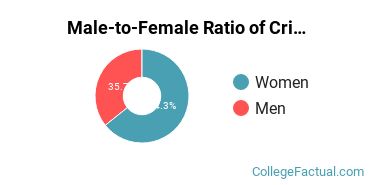 by our College Data Analytics Team
by our College Data Analytics TeamCriminology is a concentration offered under the criminology major at Niagara University. We’ve gathered data and other essential information about the master’s degree program in criminology, such as diversity of students, how many students graduated in recent times, and more.
You can jump to any section of this page using the links below:
Learn about start dates, transferring credits, availability of financial aid, and more by contacting the universities below.
Gain the management, leadership, data analysis and budgeting skills you need to advance in the criminal justice field with this online master's from Southern New Hampshire University.
Part-time graduates at Niagara paid an average of $945 per credit hour in 2019-2020. This tuition was the same for both in-state and out-of-state students. Information about average full-time graduate student tuition and fees is shown in the table below.
| In State | Out of State | |
|---|---|---|
| Tuition | $14,893 | $14,893 |
Niagara does not offer an online option for its criminology master’s degree program at this time. To see if the school offers distance learning options in other areas, visit the Niagara Online Learning page.
Women made up around 58.8% of the criminology students who took home a master’s degree in 2019-2020. This is less than the nationwide number of 65.4%.

Around 17.6% of criminology master’s degree recipients at Niagara in 2019-2020 were awarded to racial-ethnic minorities*. This is lower than the nationwide number of 35%.

| Race/Ethnicity | Number of Students |
|---|---|
| Asian | 0 |
| Black or African American | 1 |
| Hispanic or Latino | 1 |
| Native American or Alaska Native | 0 |
| Native Hawaiian or Pacific Islander | 0 |
| White | 11 |
| International Students | 2 |
| Other Races/Ethnicities | 2 |
*The racial-ethnic minorities count is calculated by taking the total number of students and subtracting white students, international students, and students whose race/ethnicity was unknown. This number is then divided by the total number of students at the school to obtain the racial-ethnic minorities percentage.
More about our data sources and methodologies.